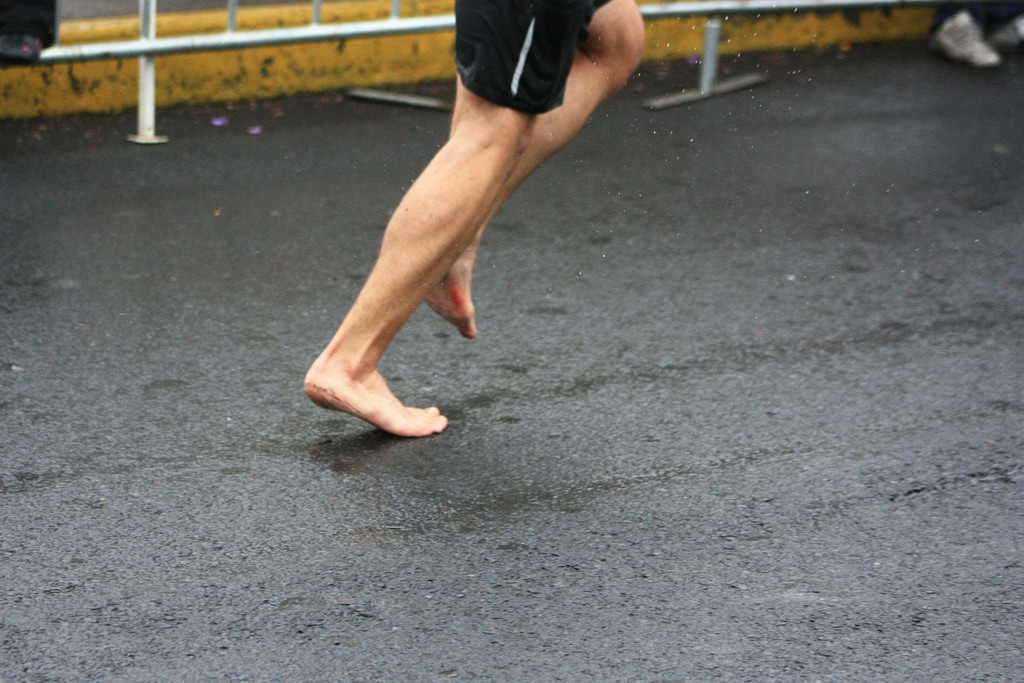Roughly 30% of runners experience injuries due to wrong technique. Barefoot running advocates encourage them to take of their shoes in order to improve their style and protect their body from further damage. Barefoot running, or as it is alternately called, natural running, is a relatively new trend among modern athletes and recreation runners. However, there are many doubters and skeptics that dismiss the practice as unnecessary and even more harmful than beneficial.
Why Wear Shoes When You Can Run Barefoot?
Proponents of barefoot running claim that shoes have changed the way we run. They explain that the support provided by running shoes impairs our sensitivity, making it more difficult to feel how our running, and the surface we run on affect our feet and body in general. For example, running shoes cushion the soles of our feet. This cushioning causes runners to regularly land on their heels rather than on the balls of their feet, simply because it feels ok. This repeated action not only decelerates our running, it also puts extra pressure on the heel which can lead to serious problems over time such as Achilles tendinitis, back pains, shin splints and ankle sprains. When running barefoot, on the other hand, landing on the heel hurts. As a result runners will make sure to correct their step, promoting a springier leg motion and healthier posture. In addition, studies have shown that by wearing running shoes, we only use 20 foot muscles and 12 leg muscles, causing many smaller muscles, tendons, ligaments and the natural arches of our feet to weaken. Activating more foot muscles and increasing the use of our ankles, hips, and legs can strengthen the body and improve balance.
Why Run Barefoot When You Can Wear Shoes?
There are as many shoeless objectors as there are supporters, and their claims too are based on extensive research. Experts claim that in actual fact a well-designed running shoe can reduce the risk of injury and even correct biomechanical foot problems over time. There is also the obvious issue of basic protection. Cuts and scratches constitute a strong argument for shoes, which protect our feet from glass, nails, stones and debris. They also provide necessary insulation.
Habit is another key element in this debate. Most runners, professional and amateurs alike, have become used to the internal and external support shoes provide. Barefoot running could cause substantial shock to their body. The soles of their feet are tender and sensitive, and their body has settled in to a certain style of running that may not work as well barefoot.
So, what's the bottom line? Should we tie up our laces or kick off our shoes? There is no one answer, but if you do decide to try the barefoot approach do it gradually. You may also want to try semi barefoot running with special shoes that provide minimal support and protection.
Habit is another key element in this debate. Most runners, professional and amateurs alike, have become used to the internal and external support shoes provide. Barefoot running could cause substantial shock to their body. The soles of their feet are tender and sensitive, and their body has settled in to a certain style of running that may not work as well barefoot.
So, what's the bottom line? Should we tie up our laces or kick off our shoes? There is no one answer, but if you do decide to try the barefoot approach do it gradually. You may also want to try semi barefoot running with special shoes that provide minimal support and protection.



